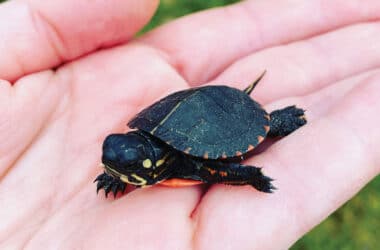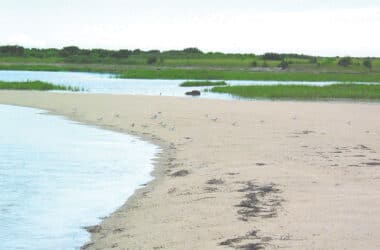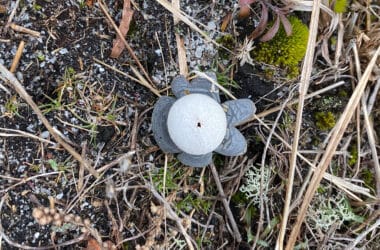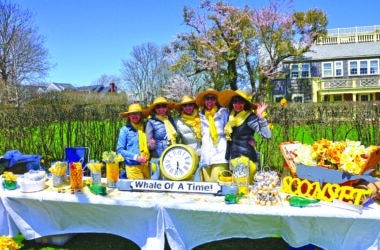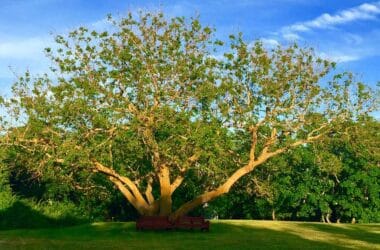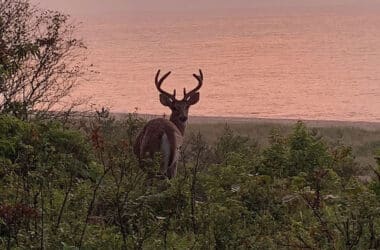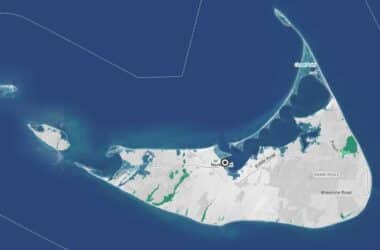There are three species of native freshwater turtles on Nantucket (in addition to a few illegally released pets). You can find previous articles about the beloved spotted turtle (Clemmys guttata) or the ubiquitous and prehistoric snapping turtle (Chelydra serpentina). The third turtle species to roam Nantucket’s freshwater and uplands is the common, native eastern painted turtle (Chrysemys picta picta). The painted turtle is the most widespread native turtle of North America and they are fairly abundant throughout their range (coast to coast through the northern US and southern Canada, south to the Gulf of Mexico from Louisiana to southwestern Alabama).
Island Science
Science Showcase for Nantucket
For many people on Nantucket—visitors and year-rounders—when asked why they love the island, they answer by talking about the natural beauty, open spaces, and bountiful moorlands. The historic charm of our downtown may be enough for some, but it’s escaping the hustle and bustle of town and getting into the open conservation lands that really enchants people.
Nature’s Barometer
Spring on Nantucket; one day you’re frolicking in the sunshine wearing short sleeves and planning your summer garden, and the next day you’re wearing a wooly cap and down jacket to go to the grocery store. Depending on when you read this, the pendulum could be swinging in either direction. Whatever the weather, it’s always a good time to get out for a nature exploration—just make sure to dress in layers.
Flowering Festivals Are Blooming Early
When the Nantucket Daffodil Festival began in 1975, organizers were looking for a way to celebrate spring and bring some life into the island’s shoulder seasons. That first festival was held on May 2nd. In 1980, the Nantucket Daffodil Festival moved to the last weekend in April, where it has remained ever since.
Season Creep
Many of us have been enjoying the mild autumn we’ve had on Nantucket this year with end-of-summer temperatures lingering well into the end of September. Forget “sweater weather”: it’s been more like shorts and t-shirts into October. Even now, in mid-November, we’ve had some 60-degree days and only recently had our first frost. It’s enough to think autumn has moved into winter’s territory.
Love Is in the Air
There is a crispness in the air now as fall begins to settle in. Among the changing leaves and cooler temperatures, another change is happening. For our whitetailed deer population, fall is the most romantic time of the year: the rut.
The rut is the magical season when deer are breeding and more active than any other time of the year. Bucks have shed the velvet from their newly grown antlers and get aggressive with each other fighting for territory and female attention. The females go into estrus and everyone is “twitterpated.”
Envisioning How to Live with Sea Level Rise
Envision Nantucket in 10 years. If you’re optimistic, you’ll be imaging our island with sea levels a foot higher than they are now.
Now envision our island community 30 years from now, with sea levels more than 3 feet higher. What can we do? How do we live with rising seas?
Envision Resilience: Designs for Living with Rising Seas is an exhibit that does just that: it presents visions of possible futures on Nantucket. Presented by Re- Main Nantucket upstairs in the Thomas Macy Warehouse at 12 Straight Wharf, this exhibit is the culmination of months of study, discussion, collaboration, and design called The Envision Resilience Nantucket Challenge.
September Is Climate Awareness Month
by Dr. Sarah Treanor Bois, PhDDirector of Research & Education at the Linda Loring Nature Foundation This September, Nantucket is once again celebrating Climate Change Awareness month. However, few people on Nantucket need to be made aware of climate change: erosion on the south and east coasts, storm surge, and […]

